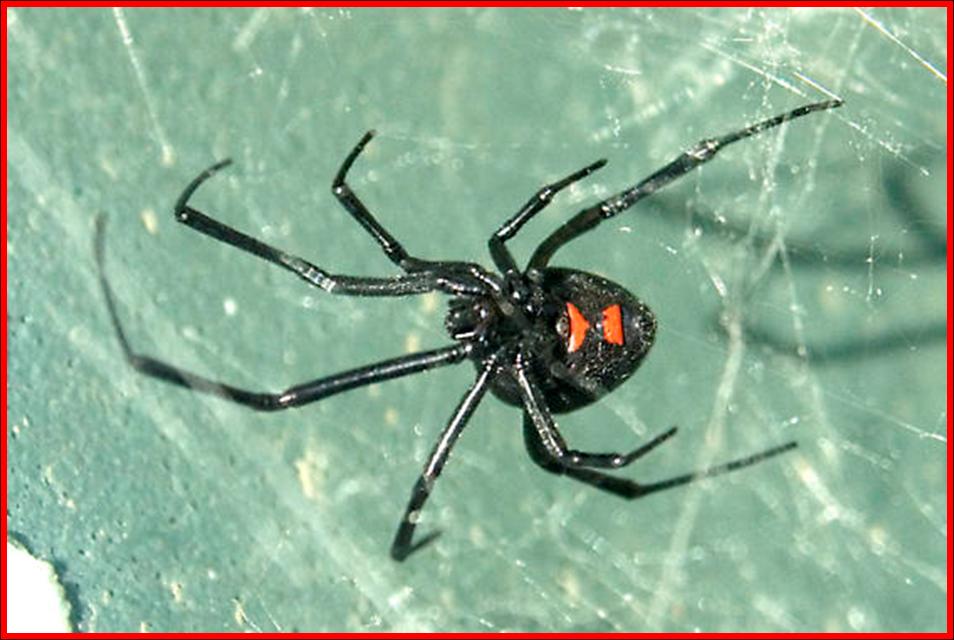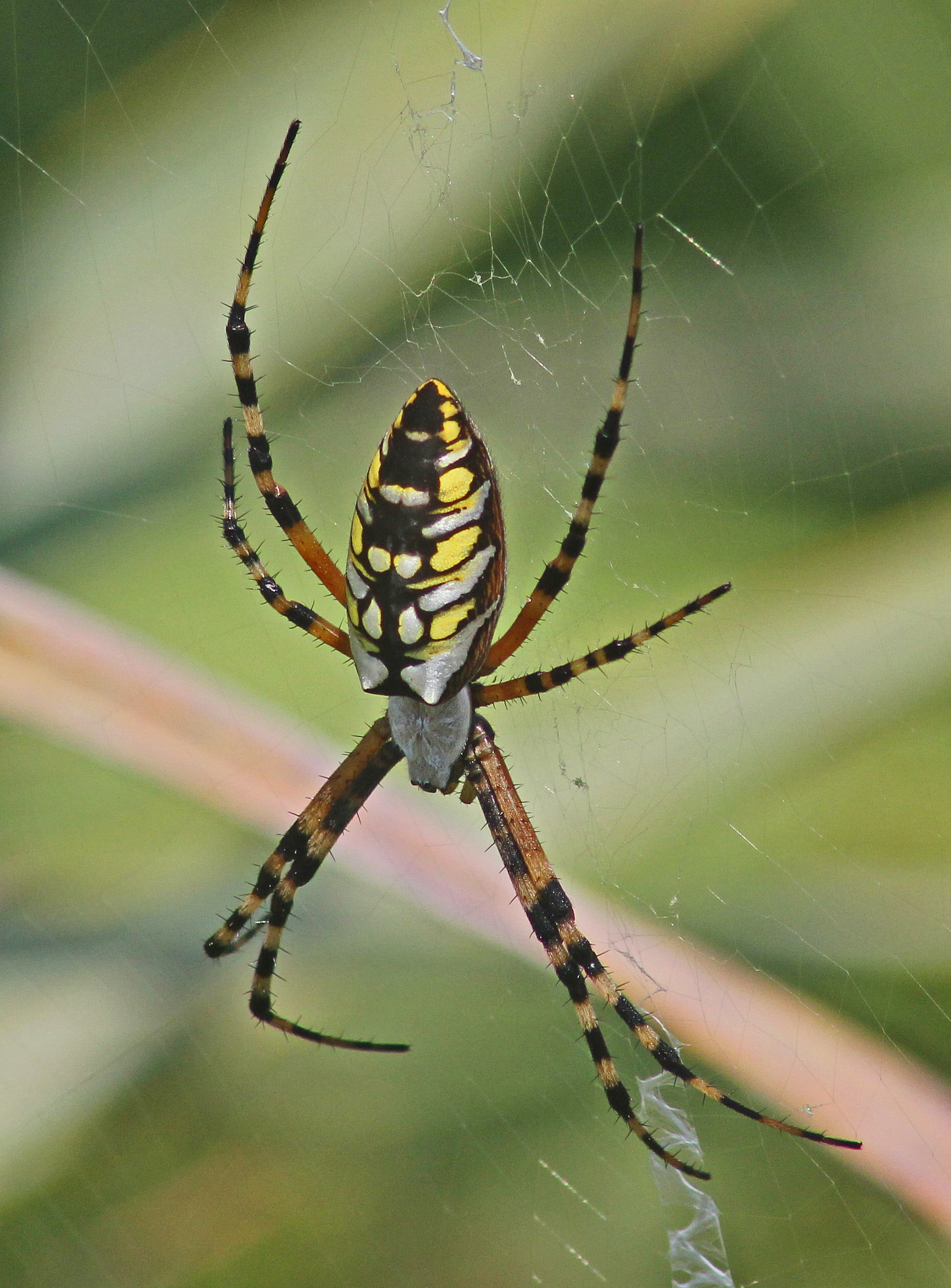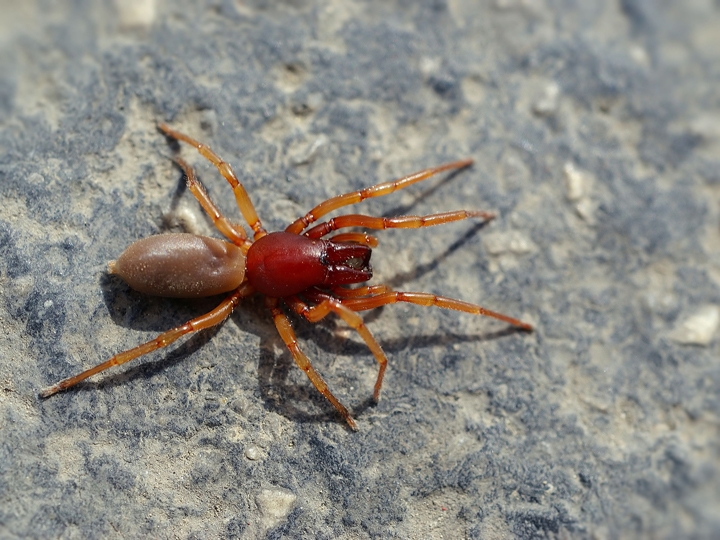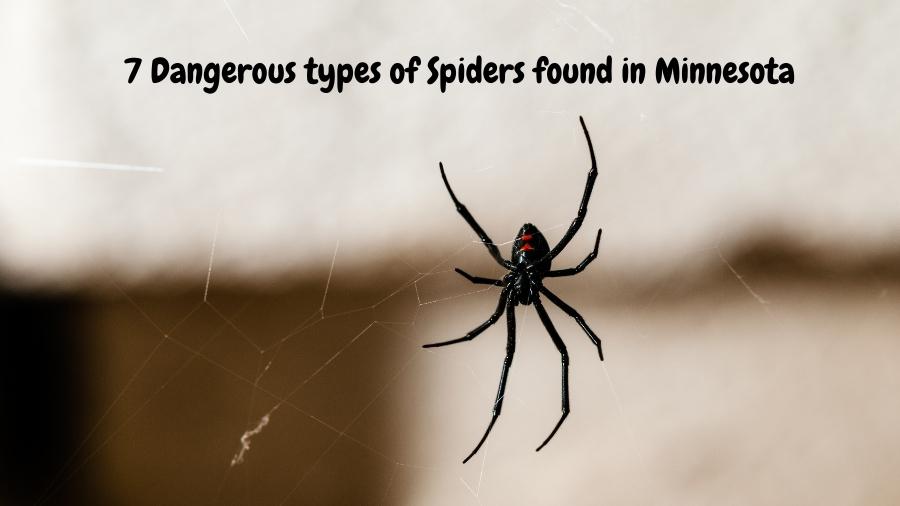Although all spiders are venomous, most venoms do not pose a threat to humans. Moreover, spiders tend to avoid people and bite only when cornered. Despite human avoidance, the spiders most likely to bite, venom, or otherwise be of concern include:
- Northern Widow
- Yellow Sac Spider
- Black & Yellow Garden Spider
- Wolf Spider
- Jumping Spider
- Nursery Web Spider
- Woodlouse Hunter
1. THE NORTHERN WIDOW

Minnesota’s northern widow is the spider with the most potent venom. Northern widows belong to the Hourglass spider family (Theridiidae), which includes other, more commonly found MN spiders, such as:
- Spider cobwebs
- Cobweb spiders triangulate
- Steatoda Borealis, false widow spiders
Appearance: Bite
Individual reactions vary, and some may not experience any symptoms at all, but reactions can include:
- Painful
- Getting burned
- Irritation
- A reddish tint
- The marks of two fangs
- Rashes
The Venomous
The bite is similar to a pinprick, but the venom contains a potent neurotoxin.
- Fever
- Severe muscle cramping
- Nausea typically persists for 1 to 2 days.
- Vomiting
- Difficulty breathing
- Excessive sweating
- Swollen eyelids
- Weakness
- Tremors
- Infographic thumbnail
Despite the daunting list of symptoms, death rarely results from their bite and is typically associated with other conditions. It is essential to keep in mind that the other cobweb spiders mentioned above do not have a venom that is considered dangerous to humans.
Signs inside home
Their webs are irregular in formation and small to medium in size. They are most likely to occupy small enclosures, especially in and around.
- Outbuildings
- Sheds
- Pump enclosures
- Meter enclosures
- Rodent bait stations
- Building perimeters along the foundation
2. THE YELLOW SAC SPIDER
Yellow sac spiders (Cheiracanthium mildei) are more common throughout Minnesota. This spider belongs to the Eutichuridae family and the long-legged sac spider, which is also found in Minnesota.
Bite appearance
Bite reactions vary from person to person and may include:
- Bruising for a short time
- The color red
- The feeling of being sore
- The necrotic wound of small size
- Venom spreads quickly
- Despite mild reactions, venom is not considered dangerous to humans. Regardless of the poison, the primary concern is the possibility of secondary bacterial infections from the bite.
What is its location?
Yellow sac spiders are found throughout Minnesota and can be found indoors throughout the year. They may rest on walls or ceilings, but they usually hide in silken retreats:
- Stones underfoot
- Under the bark
- The following leaves
- Building corners
- Indoor recesses are dark
- Folds in the fabric
Signs they are inside the house.
The spider itself is not uncommon as the first sign, but their tell-tale sign is their sleep sack. They spin a small tube or sac around dawn to sleep in. Despite thickly spun sacs, they don’t spin other webs. You may find these sacs in rolled-up leaves or underneath logs, but they are just as likely to be in a corner.
3. THE BLACK AND YELLOW GARDEN SPIDER

This spider belongs to a giant spider family (Araneidae) found outside of Minnesota homes, including:
- Weavers of marbled orbs
- Weavers of Shamrock Orbs
- Weavers of Hentz orbs
- Spiders with cat faces
- Spider with a banded body
- Bite appearance and venom potency
- Their bite is similar to a bee sting, but it is not considered dangerous.
In Minnesota, where can they be found?
Outdoor spiders are most likely to build their homes in:
- Gardening
- Plants
- Branches of trees
- Plants that grow weeds
- Human-made structures between each other
- They are usually found head down in the center of a sizeable orb-shaped web.
4. THE WOLF SPIDER

Unlike garden spiders that build webs, the Wolf spider of the Lycosidae family is abundant in Minnesota and is an avid hunter. While it is aggressive toward its prey, it has no interest in human beings wandering around – not even the tiniest tots.
Venom & Bite
The bite may be as painful as a pinprick or as painful as a bee sting, but the venom is not harmful to humans. However, secondary bacterial infections from bites are possible.
What is their location?
Under stones and debris, wolf spiders thrive in every corner of Minnesota, but they tend to move indoors as the temperature drops.
Signs of their presence in a house
Wolf spiders are active hunters, so the first sign they are in your house is usually the spider itself.
5. THE JUMPING SPIDER

Jumping Spiders (family Salticidae) is a colorful variety of spiders in Minnesota. Besides color, the movement of the:
- Bold Jumper
- A Zebra jumper is likely to catch your eye.
Venom & Bite
The bite is similar to a bee sting, but the venom is usually not harmful to humans.
What is their location?
Jumping spiders typically lurch around exterior walls, window screens, tree trunks, logs, rocks, etc.
Signs they are inside the house.
As they often hitchhike into homes on clothing and pets, you may not know that they are present until they come out in short, sharp bursts. Hopping is more common than running or crawling – hence their name.
6. NURSERY WEB SPIDER

In Minnesota, the Pisauriadea family includes the following spiders:
- Spiders in the forest nursery
- Fishing Spider with Stripes
- Fishing spider in the dark
With an impressive leg span, they can jolt even the calmest of nerves when they appear.
Venom & Bite
Spiders of this species have bites similar to bee stings, but the venom is usually not dangerous to humans.
They are found in
Due to Minnesota’s many lakes, these spiders can be found throughout the state in:
- Vegetation in the sun
- Trunks of trees have nooks
- Exteriors of buildings
- The cattails
- Plants that live in water
- According to the list, these spiders are unlikely to live permanently indoors.
7. THE WOODLOUSE HUNTER SPIDER

Woodlouse Hunters of the Dysderidae family have an aggressive appearance, including some threatening fangs.
Venom & Bite
They may bite with their distinctive fangs, but their venom is not dangerous. Secondary bacterial infections from their bites are possible, however.
What is their location?
These spiders hunt at dusk in rural and residential areas such as:
- Subterranean spaces
- Spaces crawled
- Under the rocks
- In the vicinity of foundations
Signs they are in the house
As a tube spider, look for a tubular retreat or sticky strands radiating from a tubular retreat or another hiding place.
Conclusion
Thank you for spending your time reading this, hope you did enjoy reading this; visit our website and discover more about greater topics in the rundown. Also don’t miss the opportunity of getting inspired by such successful people and other updates.
Enter your email to stay updated with offers
If you can’t see the form above, click here to open the form.







Add Comment